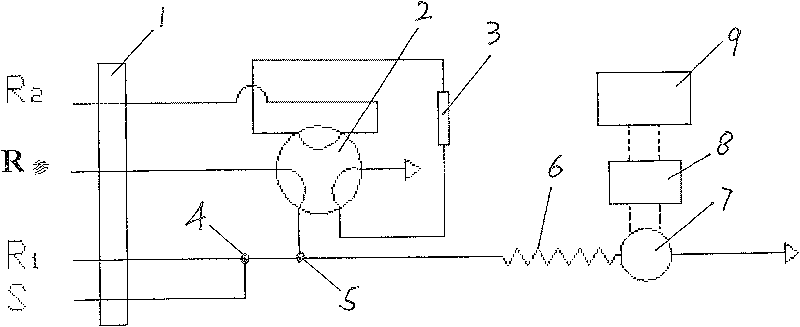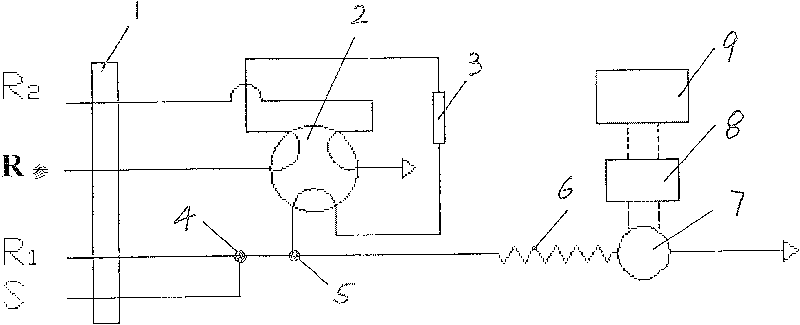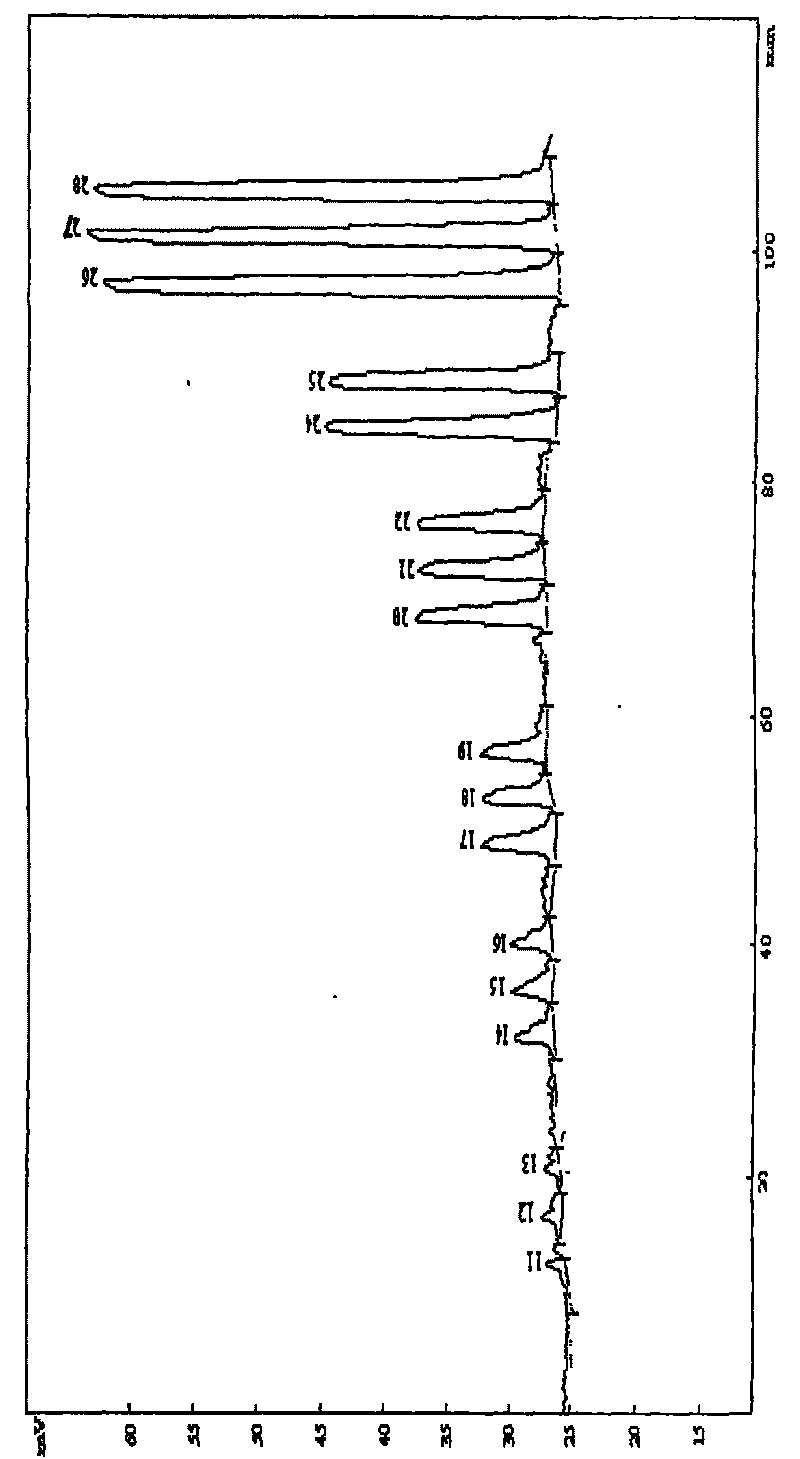Automatic analysis method for seawater phenols compounds
A phenolic compound, automatic analysis technology, applied in material analysis by observing the effect on chemical indicators, analysis by chemical reaction of materials, color/spectral property measurement, etc., can solve the problem of poor sensitivity and accuracy, labor High intensity, cumbersome operation and other problems, to achieve the effect of ensuring sensitivity and accuracy, good reproducibility, and good precision
- Summary
- Abstract
- Description
- Claims
- Application Information
AI Technical Summary
Problems solved by technology
Method used
Image
Examples
Embodiment 1
[0028] In the present embodiment, the salinity of the tested seawater sample is 30, and its analysis steps are as follows:
[0029] 1. Preparation of standard samples
[0030] (1) phenol is dissolved in deionized water, is mixed with the mother liquor of phenol concentration 1000mg / L;
[0031] (2) Dilute the mother liquor with 3.09% (w / v) NaCl aqueous solution to prepare a series of standard samples. In each standard sample, the concentration of phenol is 4 μg / L, 16 μg / L, 32 μg / L, 64 μg / L, and 120 μg / L, 240μg / L.
[0032] 2. Oxidizing solution R 1 preparation
[0033] Potassium ferricyanide (K 3 Fe(CN) 6 ) was dissolved in deionized water, and then ammonia water was added to prepare the weight / volume percentage of potassium ferricyanide as 0.1%, and the concentration of ammonia water as 1.0×10 -2 mol / L aqueous solution as the oxidation solution R 1 .
[0034] 3. Chromogenic solution R 2 preparation
[0035] Dissolve 4-aminoantipyrine with deionized water, and prepare...
Embodiment 2
[0046] In the present embodiment, the salinity of the tested seawater sample is 20, and its analysis steps are as follows:
[0047] 1. Preparation of standard samples
[0048] (1) phenol is dissolved in deionized water, is mixed with the mother liquor of phenol concentration 1000mg / L;
[0049] (2) Dilute the mother liquor with 2.06% (w / v) NaCl aqueous solution to prepare a series of standard samples. In each standard sample, the concentration of phenol is 4 μg / L, 16 μg / L, 32 μg / L, 64 μg / L, and 120 μg / L, 240μg / L.
[0050] 2. Oxidizing solution R 1 preparation
[0051] Potassium ferricyanide (K 3 Fe(CN) 6 ) was dissolved in deionized water, then ammonia water was added, and the weight / volume percentage of being mixed with potassium ferricyanide was 0.08%, and the concentration of ammonia water was 0.8×10 -2 mol / L aqueous solution as the oxidation solution R 1 .
[0052] 3. Chromogenic solution R 2 preparation
[0053] Dissolve 4-aminoantipyrine with deionized water, a...
Embodiment 3
[0064] In the present embodiment, the salinity of the tested seawater sample is 15, and its analysis steps are as follows:
[0065] 1. Preparation of standard samples
[0066] (1) phenol is dissolved in deionized water, is mixed with the mother liquor of phenol concentration 1000mg / L;
[0067] (2) Dilute the mother liquor with 1.5% (w / v) NaCl aqueous solution to prepare a series of standard samples. In each standard sample, the concentration of phenol is 4 μg / L, 16 μg / L, 32 μg / L, 64 μg / L, and 120 μg / L, 240μg / L.
[0068] 2. Oxidizing solution R 1 preparation
[0069] Potassium ferricyanide (K 3 Fe(CN) 6 ) was dissolved in deionized water, and then ammonia water was added to prepare potassium ferricyanide with a weight / volume percentage of 0.20%, and a concentration of ammonia water of 2.0×10 -2 mol / L aqueous solution as the oxidation solution R 1 .
[0070] 3. Chromogenic solution R 2 preparation
[0071] Dissolve 4-aminoantipyrine with deionized water, and prepare a...
PUM
| Property | Measurement | Unit |
|---|---|---|
| length | aaaaa | aaaaa |
Abstract
Description
Claims
Application Information
 Login to View More
Login to View More - R&D
- Intellectual Property
- Life Sciences
- Materials
- Tech Scout
- Unparalleled Data Quality
- Higher Quality Content
- 60% Fewer Hallucinations
Browse by: Latest US Patents, China's latest patents, Technical Efficacy Thesaurus, Application Domain, Technology Topic, Popular Technical Reports.
© 2025 PatSnap. All rights reserved.Legal|Privacy policy|Modern Slavery Act Transparency Statement|Sitemap|About US| Contact US: help@patsnap.com



